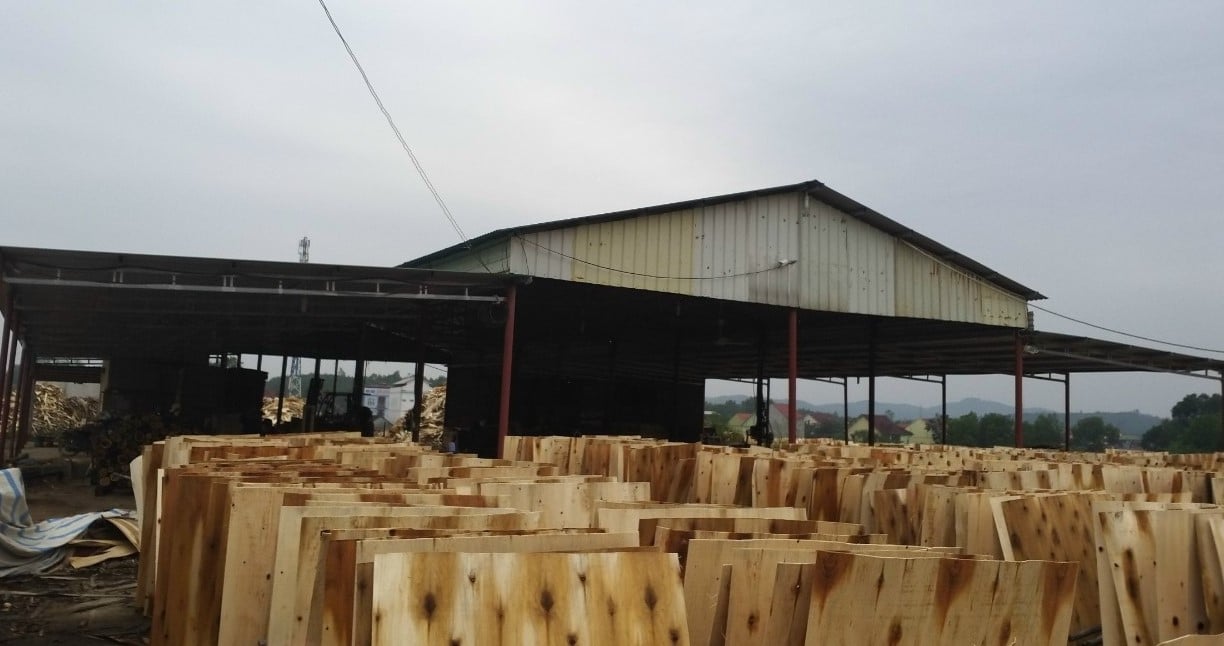June 18, 2025 | 01:59 GMT +7
June 18, 2025 | 01:59 GMT +7
Hotline: 0913.378.918
June 18, 2025 | 01:59 GMT +7
Hotline: 0913.378.918
Healthy ecosystems provide important and valuable services to the economy and society, even though these services are often not monetized. For those who place inherent value in the vitality of the natural world, preserving biodiversity is also a moral concern. When it comes to agriculture, this sector can both prevent and contribute to biodiversity loss.
Farming activities can have a negative impact on biodiversity in terms of: a) the genetic diversity of crops and livestock, b) the diversity of wild species that can use the habitat and c) ecosystem diversity influenced by land conversion and certain agricultural practices.

Vietnam promotes conservation and enhancement of biodiversity through greener approaches to land and natural resources. Photo: VAN.
Genetic diversity in domesticated crops and livestock is decreasing due to commercial single-species cultivation and the homogenization of agricultural production systems. As for animal habitats, the growing demand for food products may potentially lead to a 10% increase in land use for agriculture worldwide, mainly in developing regions with high biodiversity.
On the other hand, agriculture can help conserve and enhance biodiversity through greener approaches to land and other natural resources. Habitats and ecosystems can be prioritized and maintained through appropriate techniques. For example, soil management practices can significantly enhance soil longevity and below-ground biodiversity.
Higher levels of agricultural biodiversity also mean an increase in productivity, reflected by reduced pest incidence, improved soil nutrient levels, better crop pollination and hydrological functions. Agricultural biodiversity creates important selection values in preserving genetic resources, serving as a basis for the development of new plant and animal varieties.
Valuable approaches to promote agricultural practices that promote biodiversity conservation are called Payments for Ecosystem Services (PES). PES provides financial transfers to landowners, farmers and communities whose land use decisions can affect biodiversity value and provide incentives for the conservation of plant and animal species. The majority of existing PES programs in agriculture pay to avoid soil erosion, water pollution and landscape degradation.
Four types of environmental services provided by agriculture that may qualify for PES payments have been identified: i) supporting services (e.g. biodiversity, photosynthesis, soil formation); ii) provision services (e.g. food, water, wood, fiber and fuel); iii) regulatory services (e.g. climate regulation, flood regulation, drought control); and iv) cultural services (e.g. entertainment, aesthetics).
Biomass is used as fuel in the form of firewood, biodiesel, biokerosene and ethanol, also as raw material for the paper, lumber, furniture and construction industries. However, the use of agricultural resources to produce biomass competes with their use for food production and can negatively affect land use patterns, food supply and food prices.

Timber harvested for processing and production of plywood and wood products is still considered a solution to protect forests. Photo: VAN.
Governments are promoting biofuel production to contribute to the development of low-carbon energy sources and reduce greenhouse gas emissions, thereby solidifying energy security. Biofuel production also creates new markets for sugar, grains and oilseeds, helping to increase farmer income and rural development in general.
However, higher demand may lead to changes in agricultural land use as farmers convert tracts of cropland and forest to produce biofuel inputs. Questions have been raised about the effectiveness of biofuels in reducing net greenhouse gas emissions and increasing competition with food sources that increase prices.
Growing energy demand, declining sources of cheap petroleum, and curbs on carbon emissions are expected to increase fossil fuel costs and create a growing market for biomass, including other types of non-food crops such as grass and trees, as raw materials for biofuels. However, this has resulted in the price of grain and other agricultural inputs for biofuel production doubling or tripling.
Biofuel production may be economically and environmentally feasible in countries that produce ethanol from sugarcane. Crops used to produce biofuels (wheat, sugar beets and vegetable oils) do not offer relative savings in terms of greenhouse gas emissions. While sugarcane-based ethanol typically reduces emissions by up to 80% compared to fossil fuels, ethanol feedstock achieves emissions reductions of 30 - 60% without considering the negative impacts of land use conversion.
Policies supporting biomass production need to be reviewed for their cost-effectiveness as well as their impact on agriculture and the environment. Biofuel production should target open land and not compete with land for food production. Emissions reduction projections should take into account changes in land use. Policy integration to promote green biomass use should include joint efforts to reduce energy demand and greenhouse gas emissions as well as open markets to liberalize trade in biofuels.
Translated by Samuel Pham
/2025/06/17/3942-2-143243_548.jpg)
(VAN) Recently, in Sweden, the Secretary of the Binh Dinh Provincial Party Committee presented the Investment Registration Certificate for the 'Polyester Fabric Recycling Complex' project to SYRE Impact-AB Company.
/2025/06/12/3721-2-202745_83.jpg)
(VAN) TH made an impression at Seoul Food 2025 with its line of natural beverages, paving the way for Vietnamese food products to enter the South Korean market.

(VAN) Soc Trang's success in rice exports stems from a strategy of developing fragrant and specialty rice cultivation areas and standardizing production toward low-emission practices.
/2025/06/11/1311-5-120811_839.jpg)
(VAN) The pig farming industry is facing the challenge of comprehensive restructuring to meet requirements for quality, safety, traceability, and market expansion both domestically and for export.

(VAN) Vietnam considers participating in ALGROALBA in order to expand agricultural production, coordinate the assessment and effective exploitation potential land.
/2025/06/05/5314-1-184727_407.jpg)
(VAN) From seemingly worthless fish scales and skin, enzymes and lactic ferments can transform by-products into peptides, opening a sustainable, effective business direction and elevating Vietnamese seafood.

(VAN) TTC AgriS and IFC signed a strategic partnership to develop a sustainable agricultural value chain, aiming to achieve the Net Zero target by 2035.